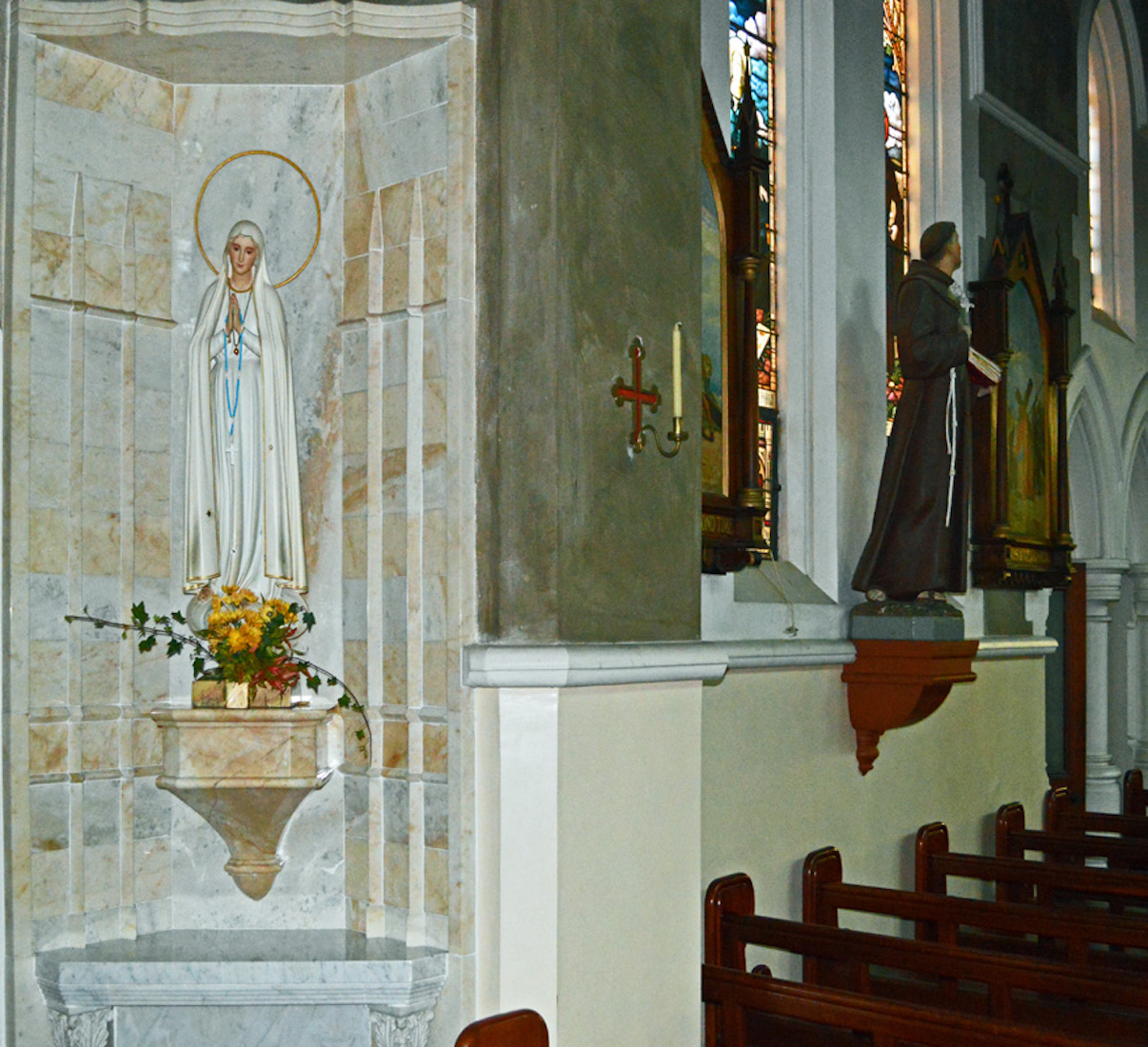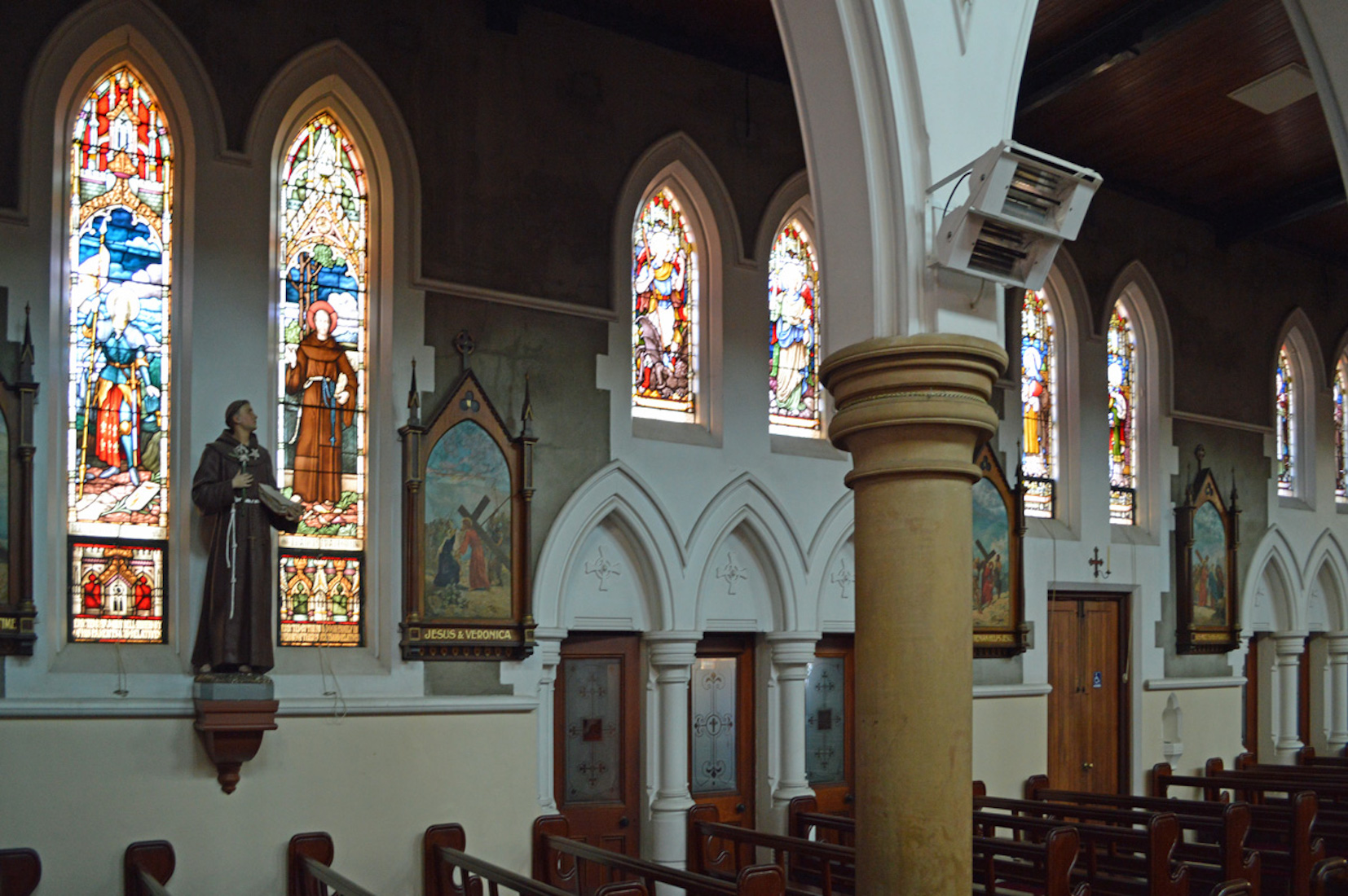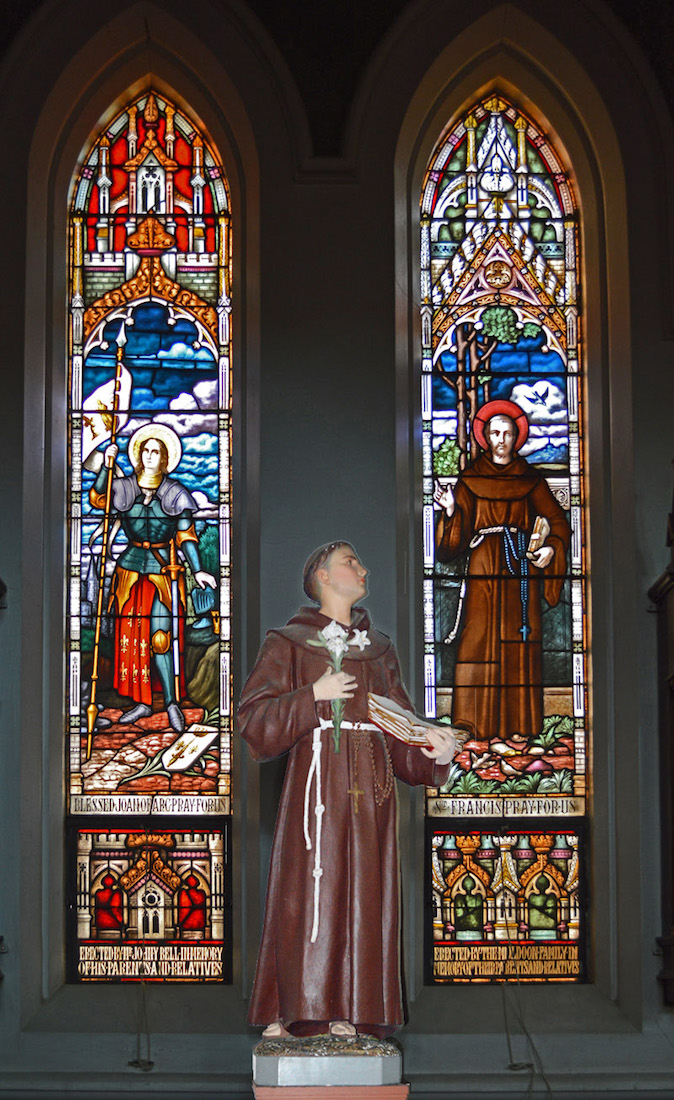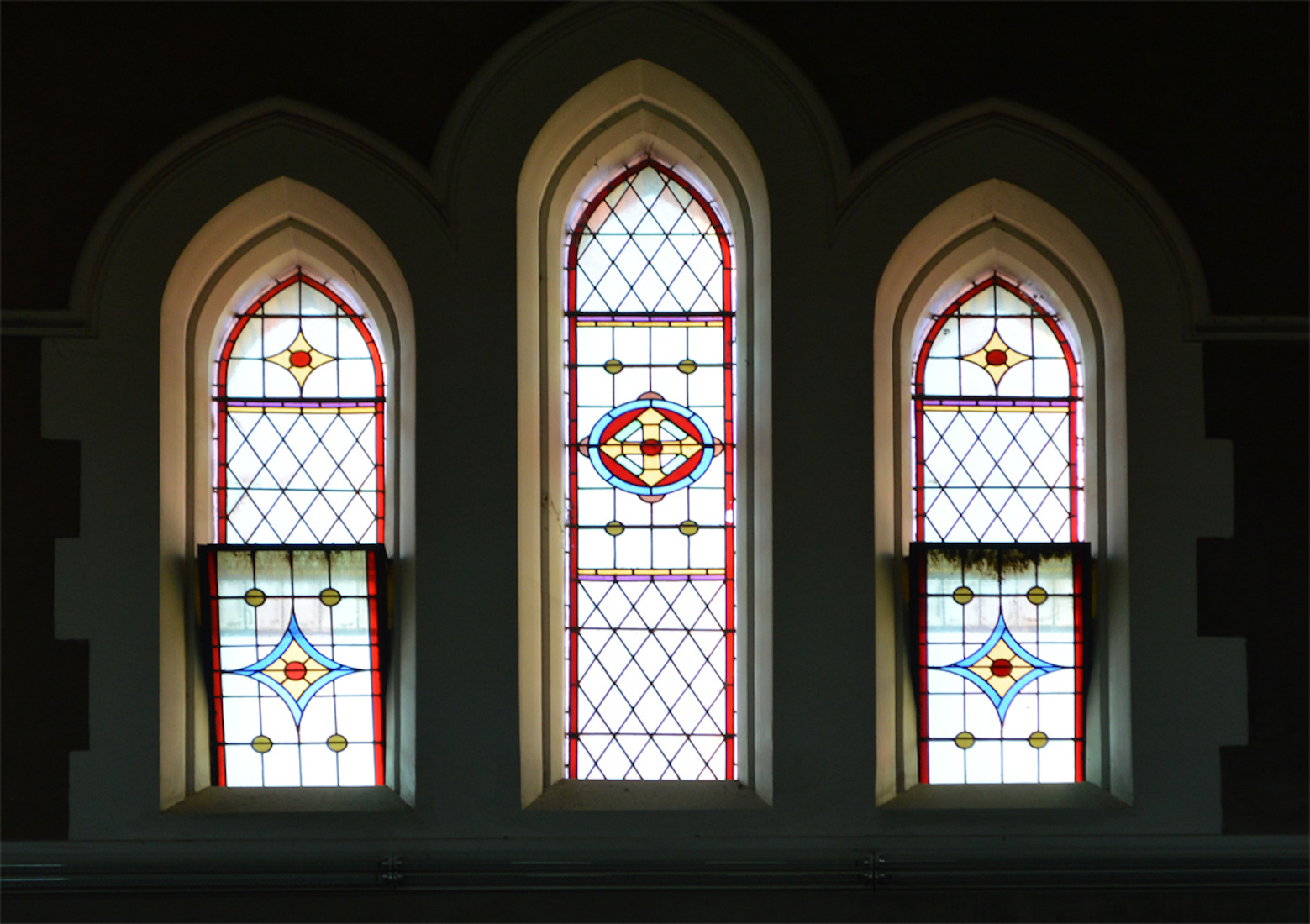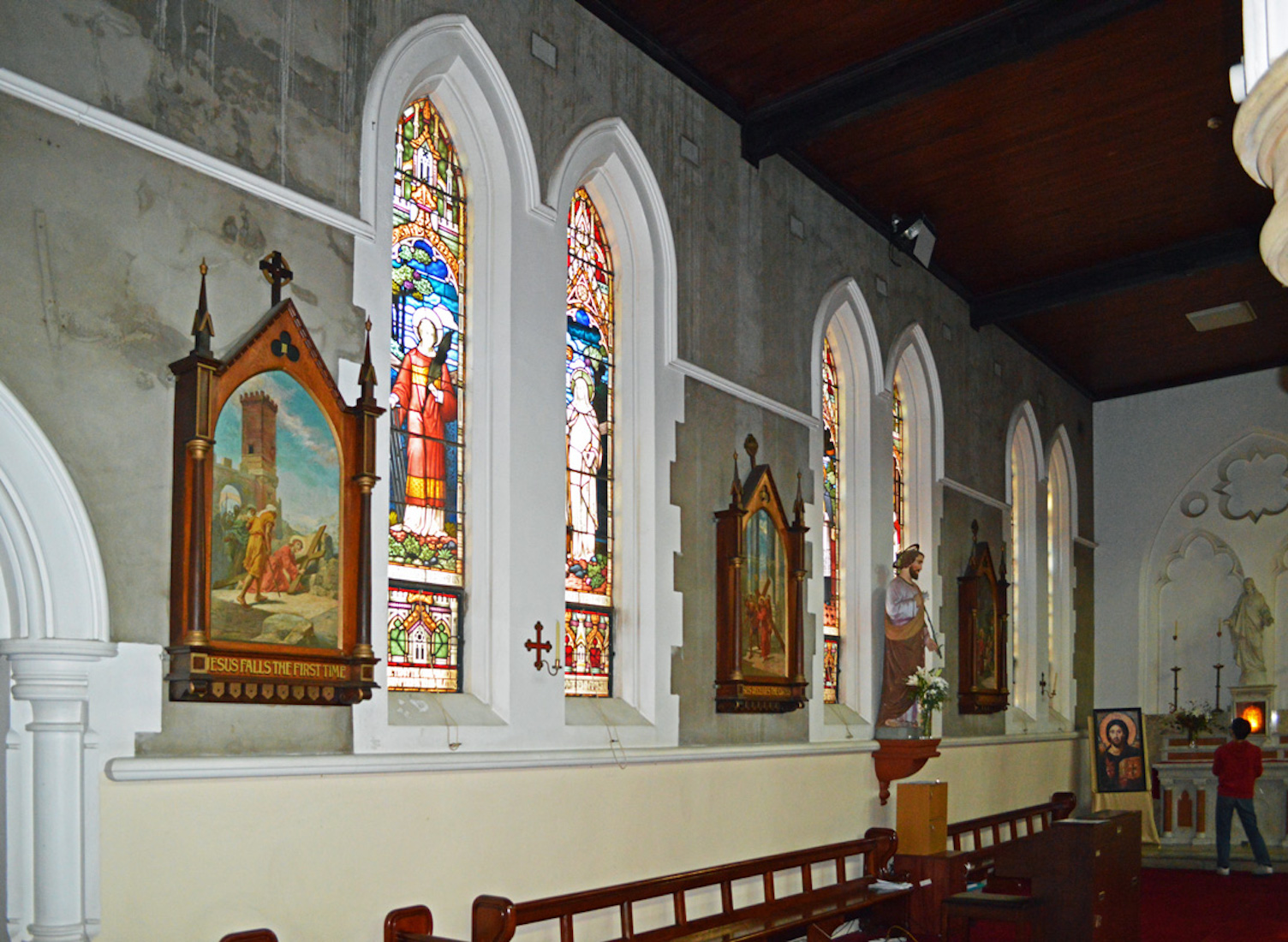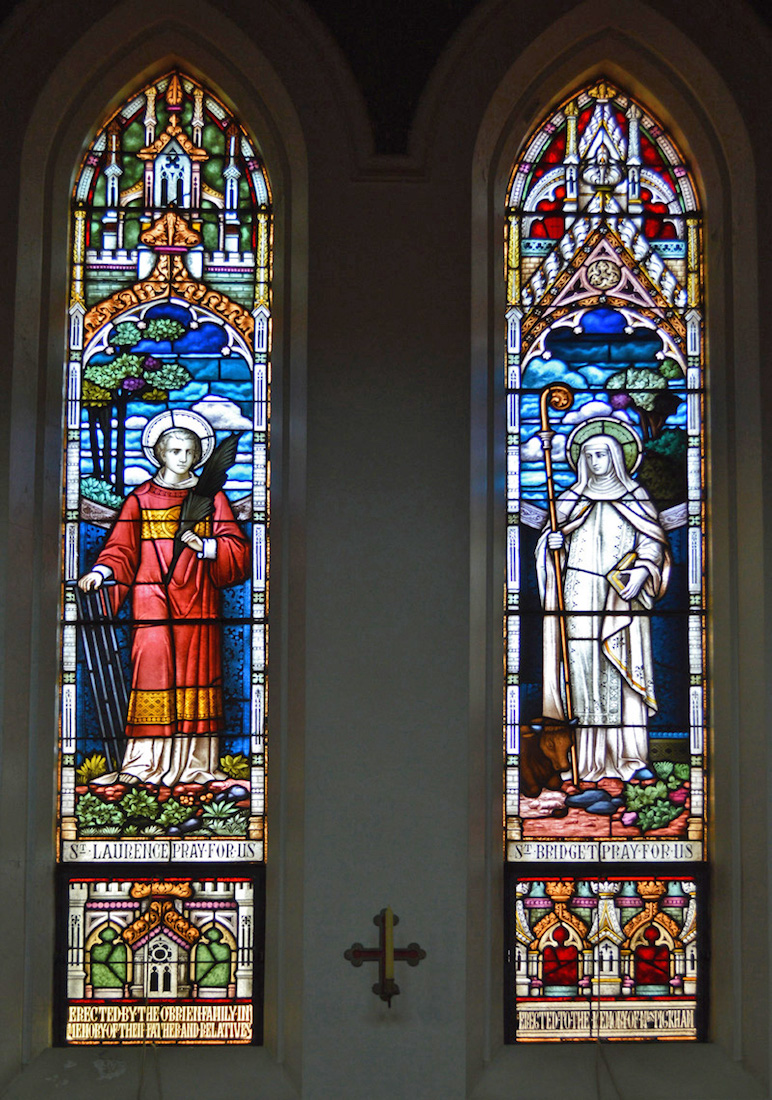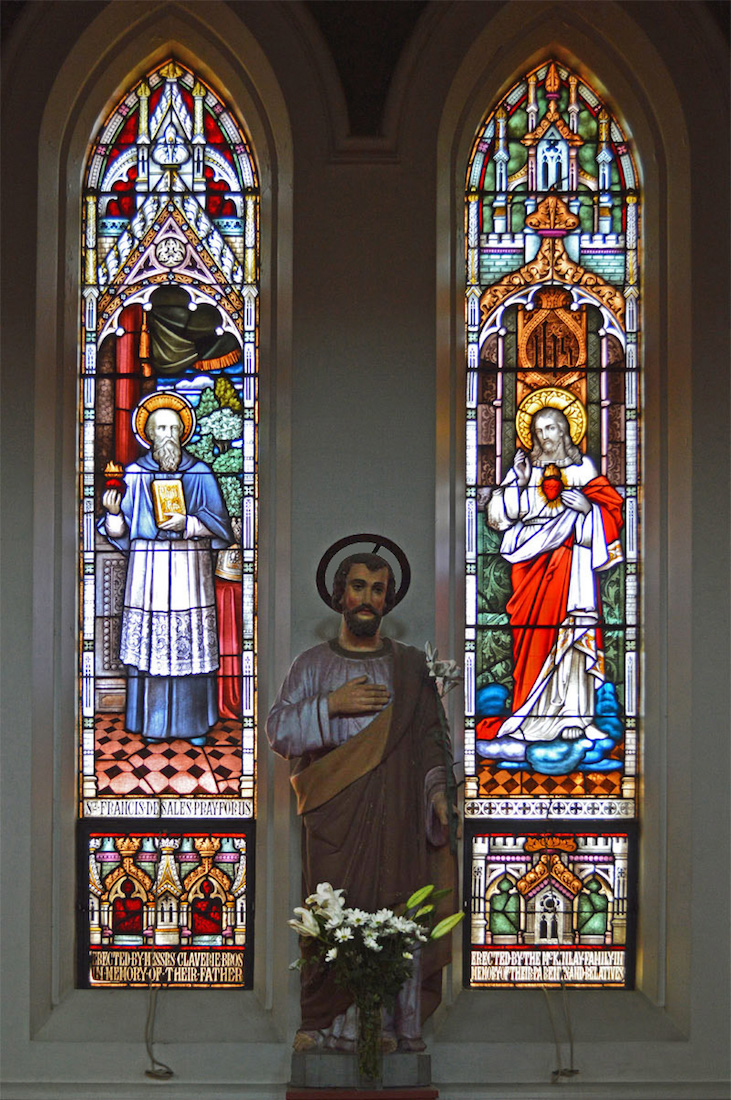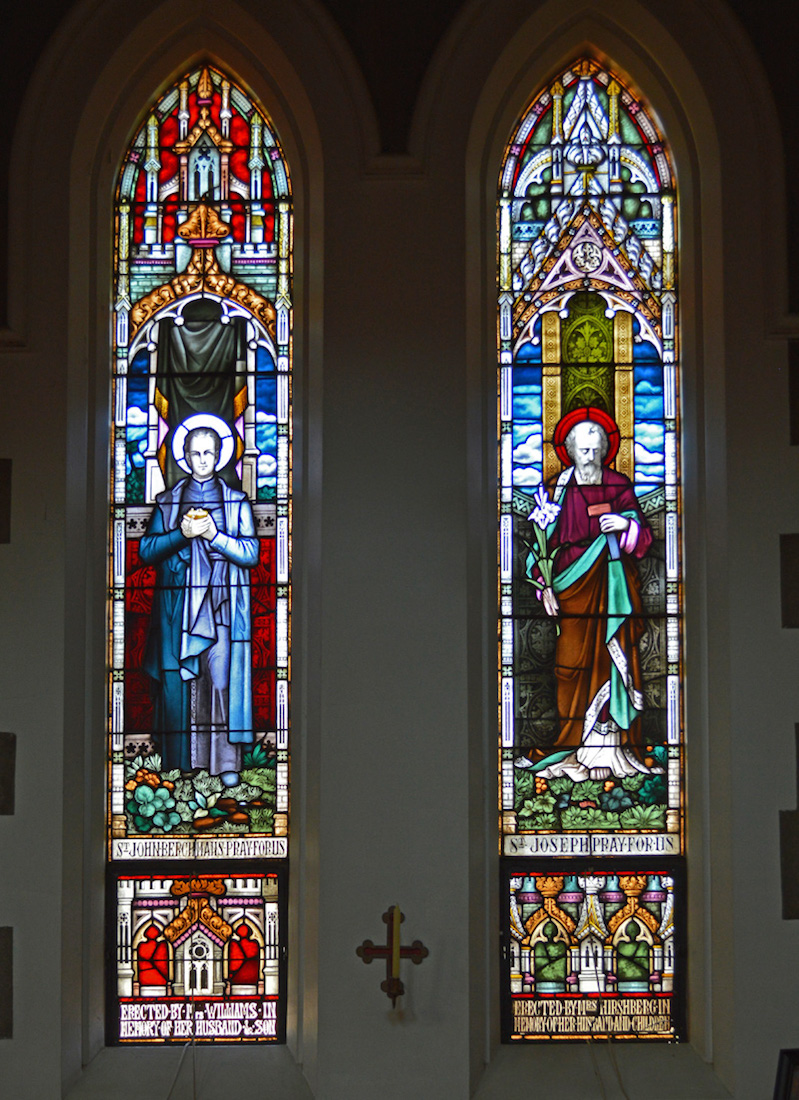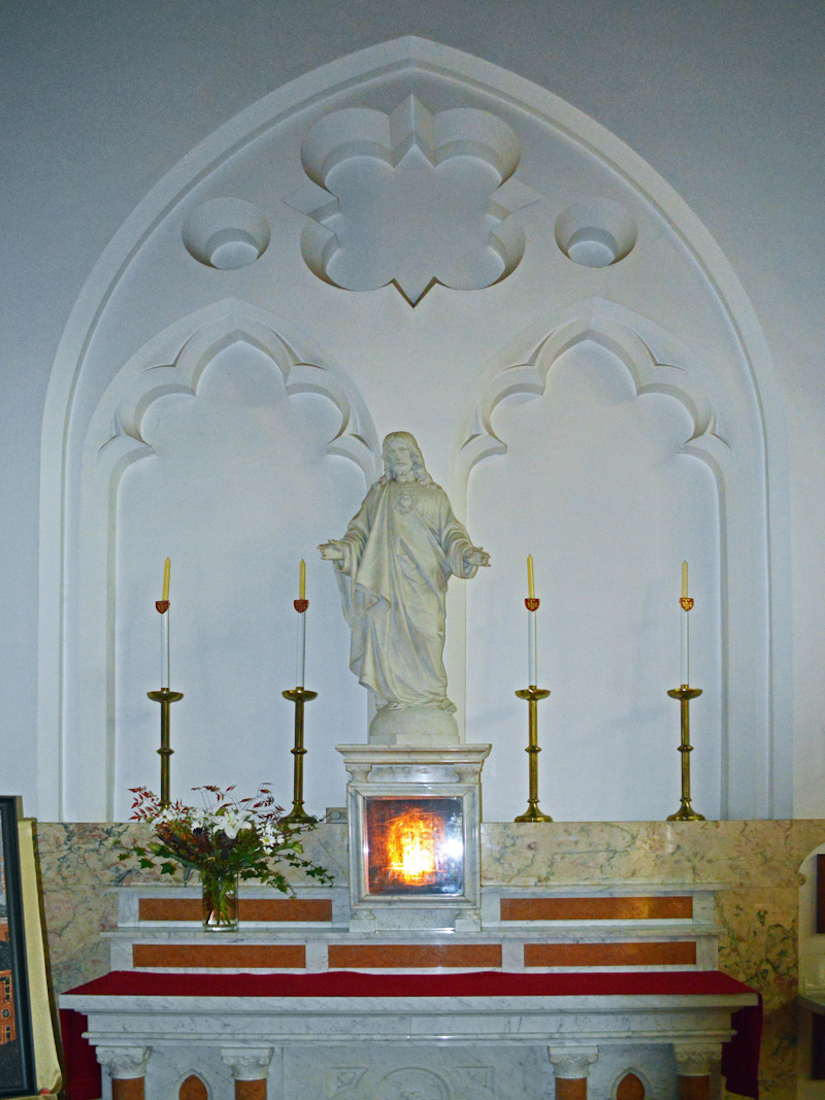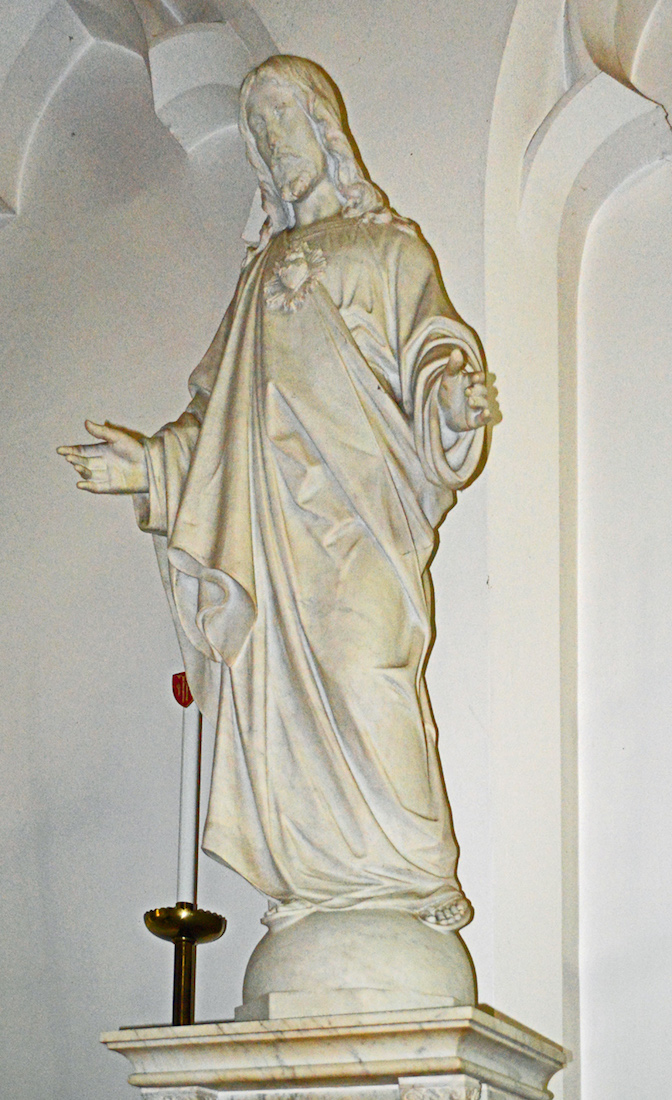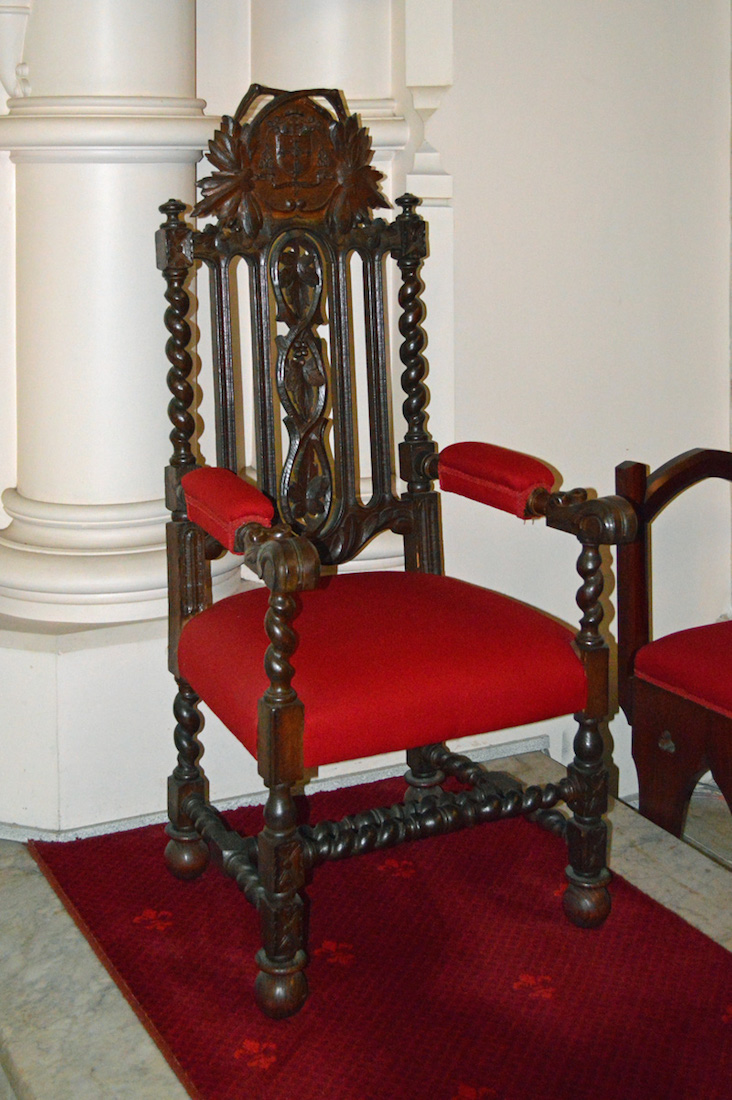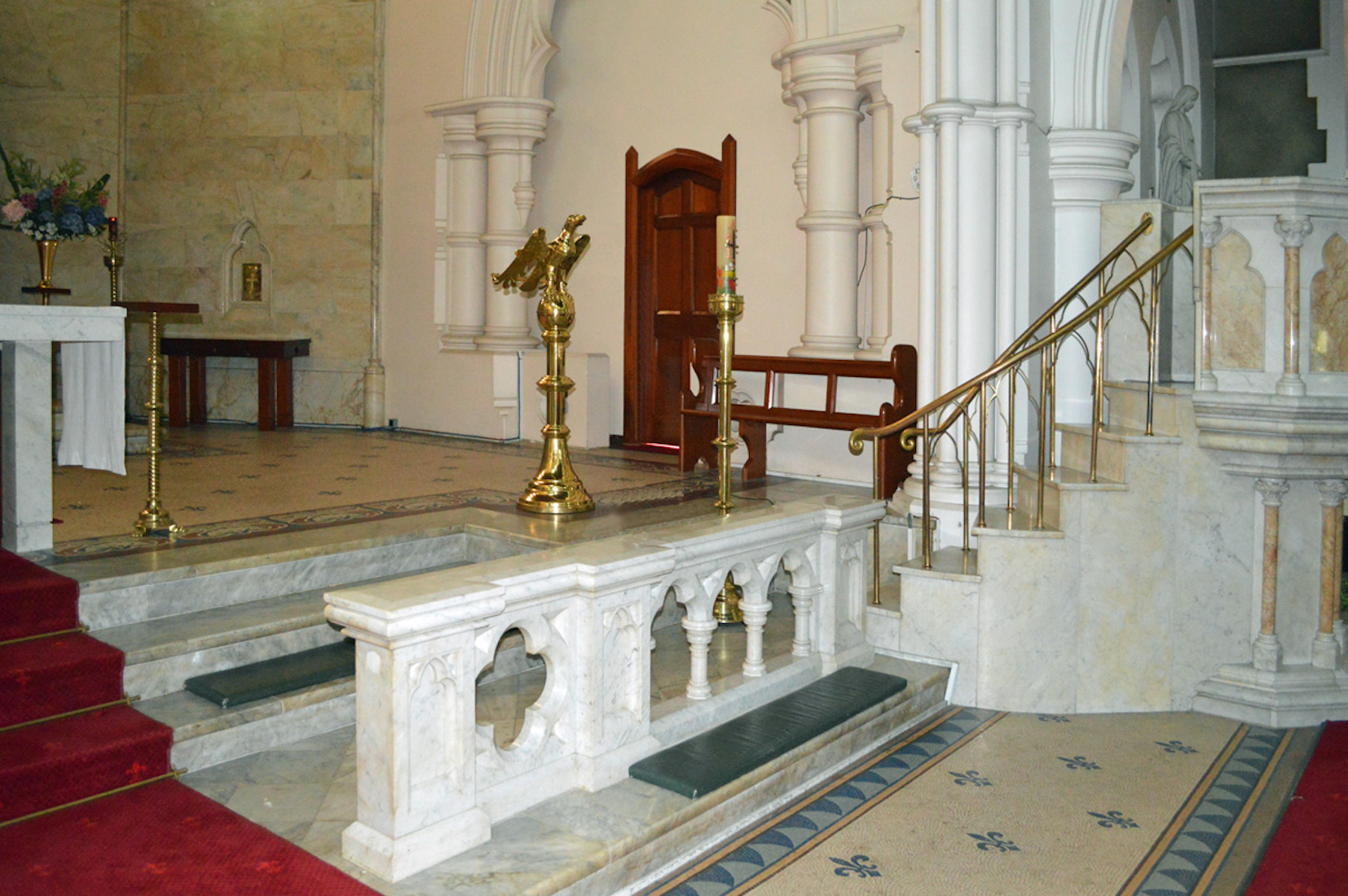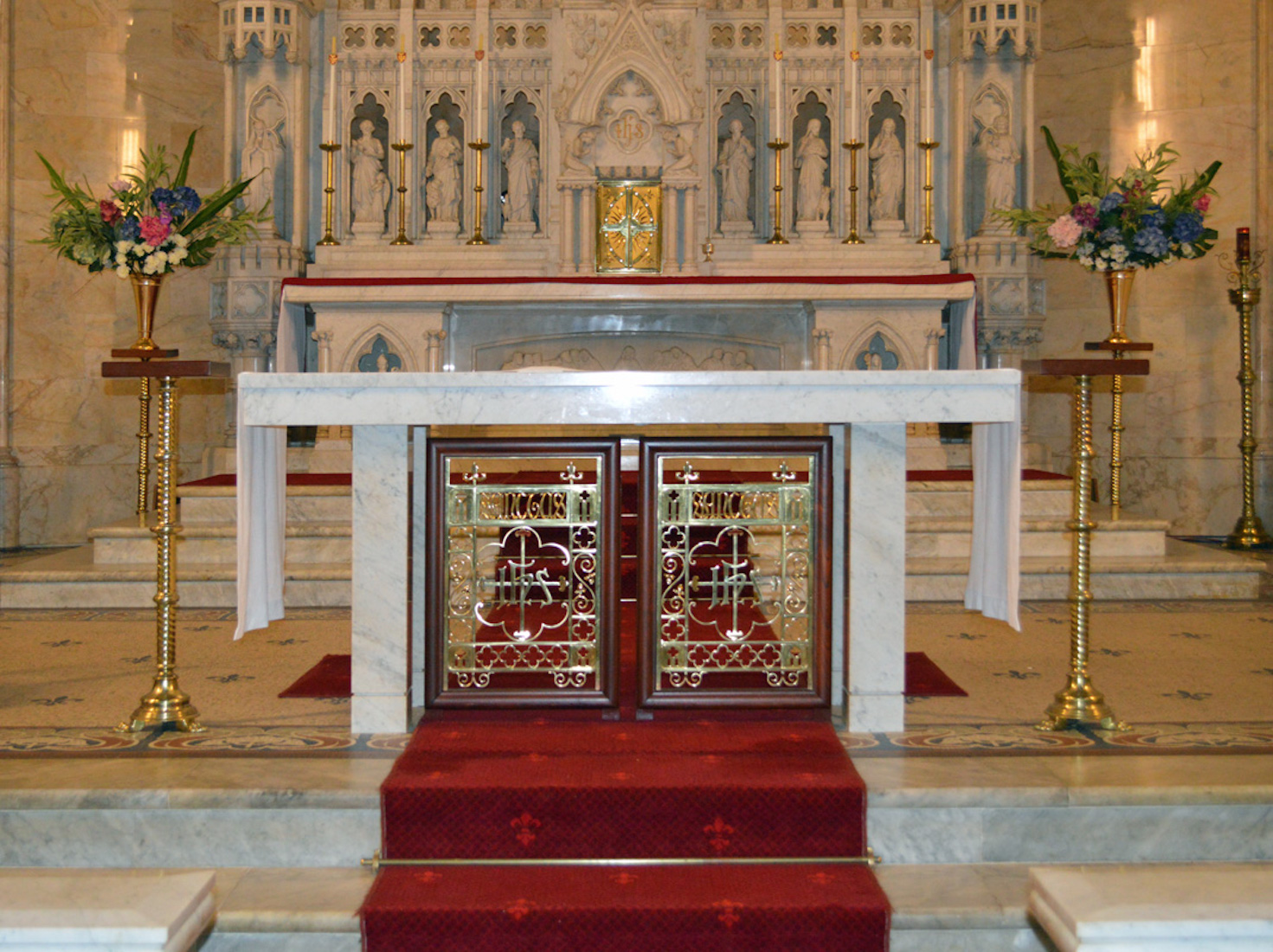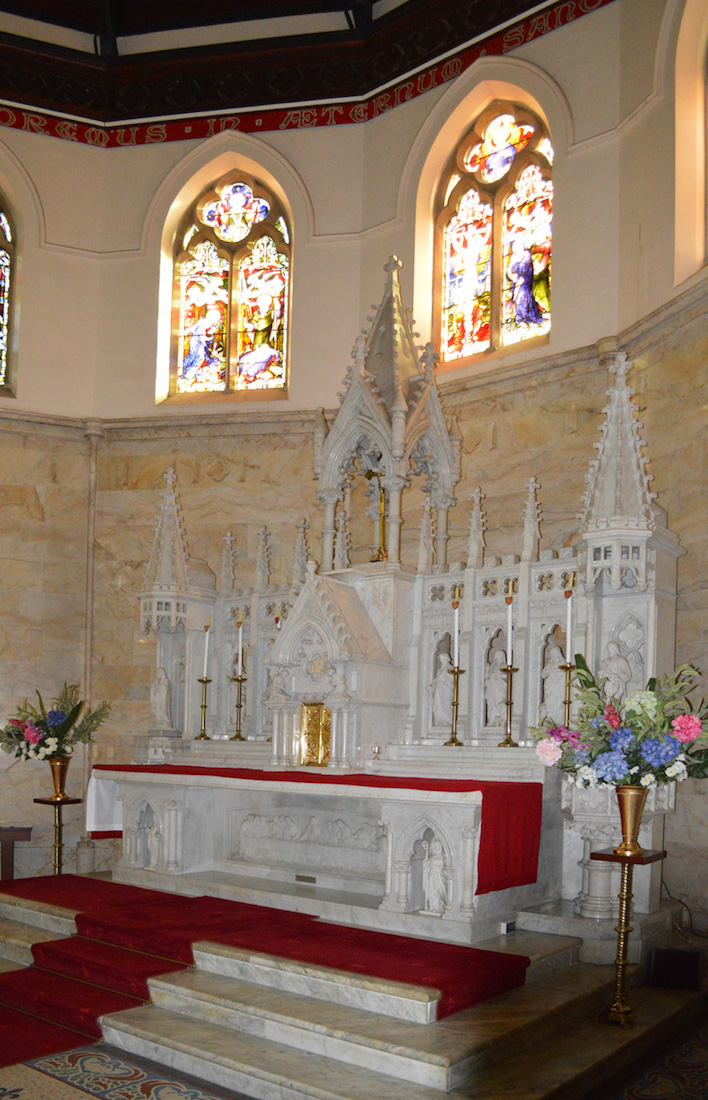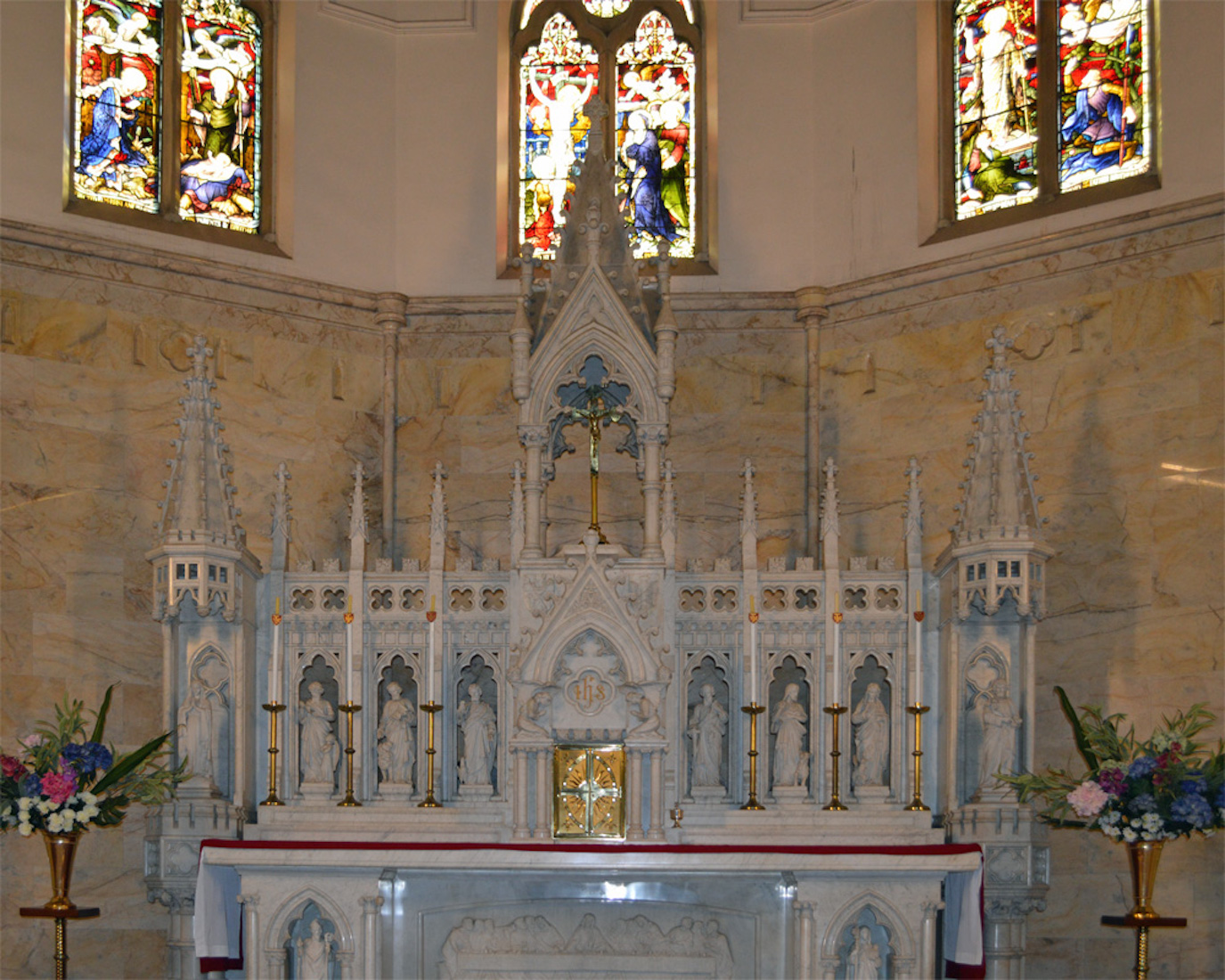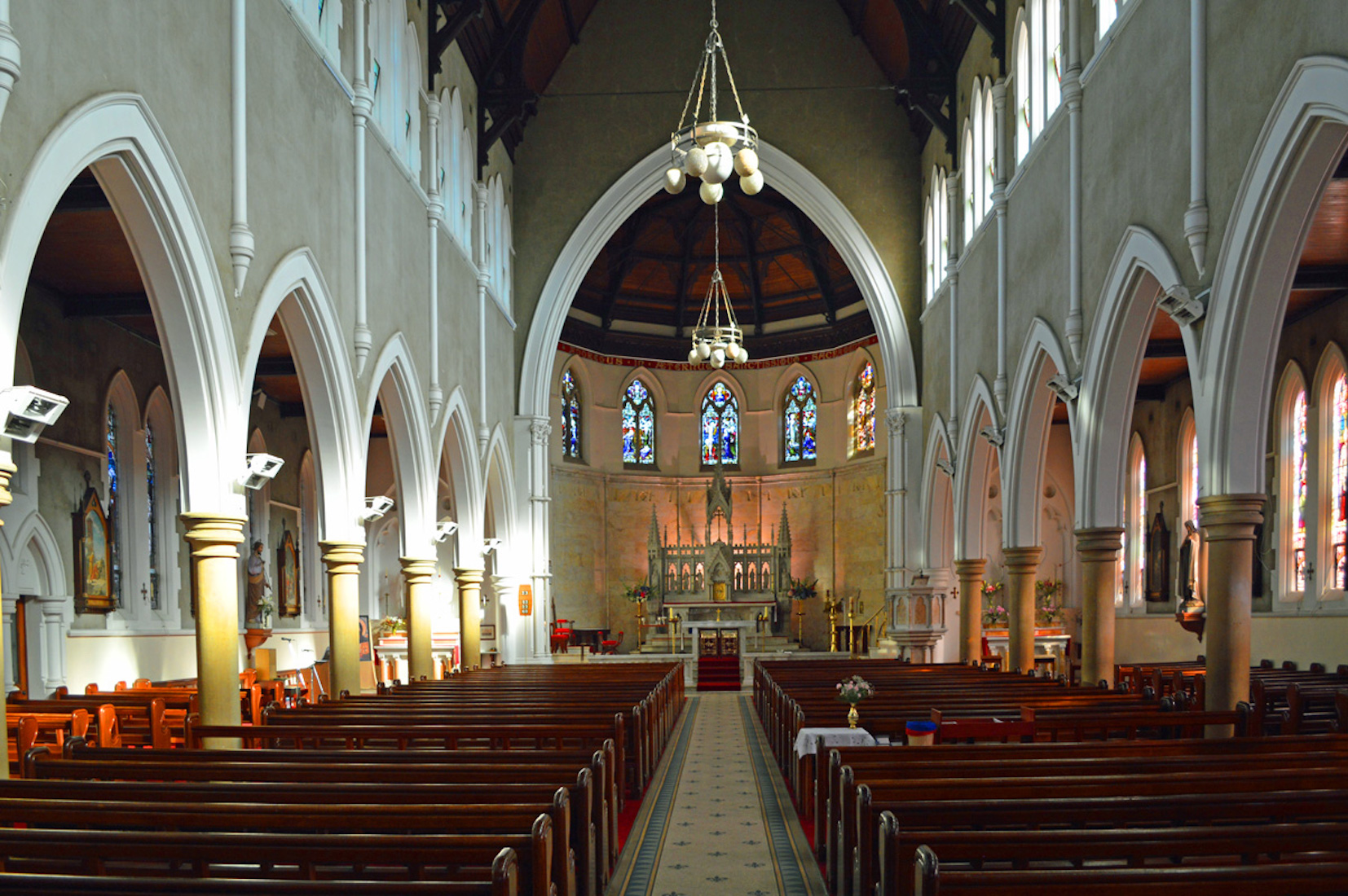
Before exploring further, let us stand back and appreciate the long nave. It is wider by some 1.6 metres than the nave of St Mary’s Cathedral in Sydney, a fact which occasioned some pride in earlier citizens of Armidale! The nave is artistically tiled with high quality terrazzo tiling laid by Italian craftsmen. The aisle features fleur-de-lis motifs, indicating the Trinity of Father, Son and Holy Spirit, and is bordered by scalloped wave designs signifying the waters of baptism. The large Gothic columns stand on Corinthian bases. PLAN
22. NAVE ROOF
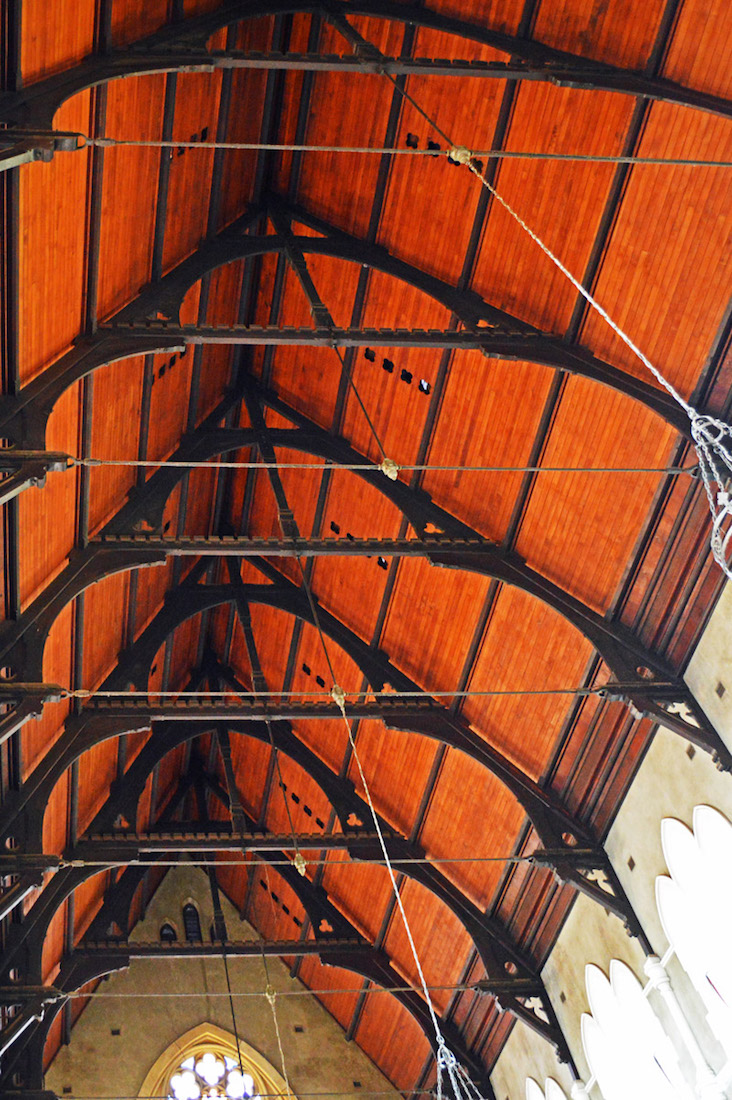
It is always interesting to look up at the roof of a nave. This is an arch-braced, hammer-beam type, with a tie rod to eliminate heavy wall construction. The roof is 18.3 metres high in the nave, and the walls are 12.8 metres high. The Cathedral is able to seat 1200 people.
23. MADONNA
Returning our attention to the North West corner of the Cathedral, we find the Centenary Shrine, a marble shrine dedicated to Our Lady of Fatima which was built in 1953. The shrine commemorated the appointment of the first resident priest in New England when Armidale was made an ecclesiastical district of the Sydney Archdiocese in 1853. Armidale became a Diocese in 1862.
24. NORTH NAVE
As we now prepare to investigate the North aisle, we pause for an overall view – of the West half! We observe St Anthony of Padua, several of the colourful stations of the Cross, the beautiful stained glass windows, and the first of the two confessionals on this wall.
25. NORTH WINDOWS I
The first window on the North Wall depicts Joan of Arc and Francis of Assisi. St Anthony of Padua stands between. Joan of Arc lived 1412 – 1431. In a complex period of history, Joan tracked down the missing Dauphin, Charles VII, and led the French army to save Orleans and capture the English forts. She later was burnt at the stake for heresy, but was canonized in 1920. Francis of Assisi lived 1181 – 1226. He was the founder of the Franciscan order, living in poverty, and making the Gospel his way of life.
26. NORTH WINDOWS II
Two shorter windows are placed above the West confessional. These depict St Michael and St Gabriel. St Michael is one of the principal angels. His name is mentioned four times in Scripture (Dan 10:13ff, Dan 12:1, Jude 5:9, and Rev 12:7–9). In art he is represented as an angelic warrior, standing over a dragon. St Gabriel is an angel who is also mentioned four times in the Bible (Dan 8:16. 9:21, and Luke 1:9, 26). On each occasion, Gabriel is bearer of good news.
27. CLERESTORY WINDOWS
Above the nave there are sets of triple clerestory windows on each side. The object of these is to let light stream into the interior, so they are fairly plain and simple in design.
28. NORTH WINDOWS III
Continuing our exploration of the North nave windows, we come to this pair: Teresa of Avila at left, and Philomena at right. Teresa of Avila lived 1515 – 1582, and entered a Convent at age 20. Her emphasis on personal prayer and simple life style evoked some ecclesiastical opposition, but became an example for reforms in other countries and centuries. According to tradition, Philomena was an early Roman virgin and martyr. Her relics were associated with many miracles and healings.
29. NORTH WINDOWS IV
The next pair of windows portray St Dominic and St Gerard Majella. St Dominic lived 1170 – 1221, and was founder of the Black Friars or Dominican Order. His chief work was the foundation of communities dedicated to sacred learning and teaching. St Gerard Majella lived 1726 – 1755, and was born in Italy. He became a lay brother of the Capuchin Order, and there followed three eventful years in which he was associated with stories of clairvoyance, prophecy, charity to the poor, and miraculous healings.
30. NORTH EAST NAVE
At this stage we are just half way down the North aisle, and it is time for further reconnaissance! Stained glass windows, stations of the Cross and a statue of St Joseph await us as we approach the altar to the Sacred Heart at the end.
31. NAVE WINDOWS V
We continue our perusal of the North nave windows with St Laurence (left) and St Brigid (right). St Laurence was a martyr who died ca 258 – one of the victims of a persecution by Emperor Valerian. He has been one of the most honoured martyrs of the Roman church. Laurence was a Deacon renowned for his generous almsgiving. Historical facts about St Brigid (Bridget) of Ireland are extremely rare. Her miracle stories portray her as having great compassion. Often she is pictured with a cow lying at her feet, as here – a nun cow-girl!
32. NAVE WINDOWS VI
Next in the gallery come these portrayals of Francis de Sales and the Sacred Heart. St Joseph stands between. Francis de Sales was a Bishop and doctor of the Church who lived 1567 – 1622. He became Bishop of Geneva in 1602. He excelled in administration, preaching, spiritual direction and catachetics (instruction by question and answer). Devotion to the Sacred Heart seems to have developed from the much earlier cult of the Wounded Side. The story of St Margaret Mary Alacoque’s life traces that development.
33. NAVE WINDOWS VII
This window pictures John Berchmans and Joseph, spouse of the Blessed Virgin Mary. John Berchmans lived 1599 –1621, and was born in Belgium. He was an enthusiastic student of religious matters, and decided on a vocation in the Society of Jesus. His spiritual doctrine was that sanctity consists less in unusual dramatic actions, than in the loving practice of fidelity to God in day-to-day living. St Joseph’s story is well known. He is patron of families, manual workers, of bursars and of the dying.
34. BLESSED SACRAMENT ALTAR
At the East end of the North aisle is the altar to the Sacred Heart of Jesus. Historically the Devotion to the Sacred Heart is an outgrowth of devotion to Christ's sacred humanity. There is nothing to indicate that, during the first ten centuries of Christianity, any worship was rendered to the wounded Heart of Jesus.
35. SACRED HEART
The revival of religious life and the zealous activity of St. Bernard and St. Francis in the twelfth and thirteenth centuries, together with the enthusiasm of the Crusaders returning from the Holy Land, gave rise to devotion to the Passion of Jesus Christ and particularly to practices in honour of the Sacred Wounds. Devotion to the Sacred Heart developed out of this. A close-up of the Sacred Heart statue ...
37. ACROSS TO THE LECTERN
Passing the cathedra, we move towards the sanctuary, delineated from the nave by marble steps and a fine marble altar rail. The shapes in this rail reflect the shapes appearing in the nave altar. We note the gold lectern, and the steps at right leading to the pulpit.
38. ALTARS
A red carpet leads up the sanctuary steps to the nave altar. This was placed here in 1969 as part of Centenary celebrations, in line with liturgical changes formalized by the Second Vatican Council (1962 – 1965). This allows the celebrant to face the congregation. I particularly like the ornate bronze gates which form a visual barrier to the high altar beyond.
39. HIGH ALTAR FROM SIDE
This Carrara marble altar, the work of J.J. Edstein of Newcastle, was erected by Bishop O’Connor in 1919. It is constructed in elaborate Gothic style. It is worth spending some time examining the detail of the altar.
40. HIGH ALTAR
At the base of the altar is a bas-relief depicting the Last Supper. St Patrick (with snake) is at left, and St Brigid at right. On the upper level, the tabernacle is decorated with a sun motif on the brass door. At either end of the altar, separate large niches contain statues of St Mary and St Joseph, to whom the Cathedral is dedicated. Saints represented at either side of the tabernacle are (from left): St Matthew (with angel), St Mark (with lion), St Peter (key and rooster), St Paul (with sword), St Luke (ox) and St John (eagle). All hold parchments, symbolizing their status as great gospel writers.


